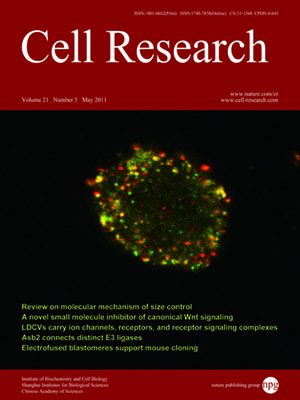
Volume 21, No 5, May 2011
ISSN: 1001-0602
EISSN: 1748-7838 2018
impact factor 17.848*
(Clarivate Analytics, 2019)
Volume 21 Issue 5, May 2011: 715-729
REVIEWS
Molecular mechanism of size control in development and human diseases
Xiaolong Yang1 and Tian Xu2,3
1Department of Pathology and Molecular Medicine, Queen's University, 88 Stuart Street, Kingston, Ontario, Canada K7L 3N6
2Howard Hughes Medical Institute, Department of Genetics, Yale University School of Medicine, Boyer Center for Molecular Medicine, 295 Congress Avenue, New Haven, CT06536-0812, USA
3Institute of Developmental Biology and Molecular Medicine, Fudan-Yale Center for Biomedical Research, School of Life Science, Fudan University, Shanghai 200433, China
Correspondence: Xiaolong Yang, Tian Xu,(yang@cliff.path.queensu.ca; tian.xu@yale.edu)
How multicellular organisms control their size is a fundamental question that fascinated generations of biologists. In the past 10 years, tremendous progress has been made toward our understanding of the molecular mechanism underlying size control. Original studies from Drosophila showed that in addition to extrinsic nutritional and hormonal cues, intrinsic mechanisms also play important roles in the control of organ size during development. Several novel signaling pathways such as insulin and Hippo-LATS signaling pathways have been identified that control organ size by regulating cell size and/or cell number through modulation of cell growth, cell division, and cell death. Later studies using mammalian cell and mouse models also demonstrated that the signaling pathways identified in flies are also conserved in mammals. Significantly, recent studies showed that dysregulation of size control plays important roles in the development of many human diseases such as cancer, diabetes, and hypertrophy.
Cell Research (2011) 21:715-729. doi:10.1038/cr.2011.63; published online 12 April 2011
FULL TEXT | PDF
Browse 2302


